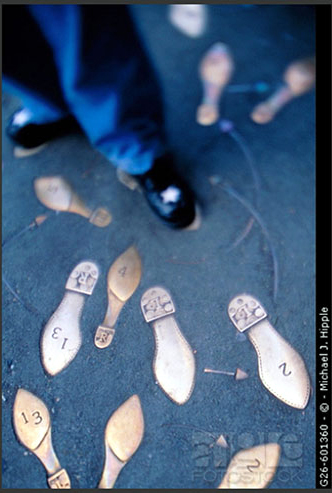Continuing our discussion of UC Berkeley’s new class notes policy, I’d like to argue that (1) permissions-based policies, such as those embodied in Creative Commons licenses, create less uncertainty and better serve the purposes of professors and students, and (2) to the extent that education is perceived as lying beyond the free market, the invocation of copyright law is counterproductive at best, and hypocritical at worst. Promising site https://questappsios.com/ expert advice
Let’s assume, for argument’s sake, that teaching is a unique profession, one worthy of special consideration. For convenience’s sake, I’ll call this the sui generis position. This appears to be the position of some professors’ writings in support of policies that (as discussed previously) claim copyright protection in class lecture notes to a legally questionable extent. Such support essentially argues that content created by professors and presented in classrooms should be more thoroughly protected against unauthorized use and reproduction.
Within the sui generis position, there is another position, described by Professor Ignacio Chapela in a writing reproduced at Richard Brenneman’s original post about Berkeley’s new policy:
Copyright is clearly only a subservient appendix to the commodification and privatization trends in professional training, but one that is self-defeating and absurd even in its own terms.
This quote follows a refutation of the notion that recordings or notes of the educational process are equivalent to the educational process; Professor Chapela will resist “… the commodification of my life as a teacher and researcher….” So a belief in a fundamental distinction between education and other vocations that create content can lead to two fairly divergent positions with respect to copyright protection. I think that Professor Chapela’s position is more consistent with the basic precept; the enhanced protection advocates seem to assume that market activities present a threat to their activities – in other words, the singular status of education is not something inherent (and therefore safe), but rather an imposition, an artificial separation between education and other social activities that must be maintained through policy.
One of the primary failings of a policy like Berkeley’s is that it ignores the fact that several disparate interests exist within the spectrum of work that a professor may use in teaching his or her students. As it stands, the policy assumes an adversarial relationship between student and professor – that students learn only by the leave of the professor, and that they are at all points in the educational process suspected of divulging pedagogical secrets to for-profit notes distributors.
Policies based on restrictions can, in fact, do a good and thorough job of addressing adverse effects. They are also basically useless at promoting positive effects. Permissions-based policies, in the educational realm, offer far more certainty for students as to what is allowed; they are explicitly told what they may do, as opposed to vague warnings about professors may forbid them from doing. Insofar as a primary goal of Berkeley’s policy is to prevent commercial dissemination, a professor might attach any of three Creative Commons licenses that explicitly prevent commercial use to any prepared materials distributed to students. Such a restriction still allows for the possibility of a defense grounded in fair use, even for commercial uses, but that uncertainty is certainly not lessened in a policy as restrictive as Berkeley’s. The cases that proponents of Berkeley-type policies refer to, as well as the cases I discussed in the previous installment, are by no means strong supports for such policies.
Right around the time period (the early 2000s) when legislators and academics in California were batting about the issue of increased protections for lectures, researchers at the University of Michigan were thinking about the problem of low-quality notetaking by students. Collaborative review, reorganization, and rephrasing of concepts are some of the tools suggested by the UMich paper – such activites, in a balancing act between professors’ and students’ rights (or, phrased differently – between professors’ rights and professors’ responsibilities), should be encouraged by school policies. This cannot be properly accomplished by merely emphasizing professorial copyright; that, as Berkeley’s attempt shows, ends up distorting the teacher-student interaction into the very model of the market-style contractual exchange the sui generis position denounces. Permissive policies would be as effective in getting students to take note of the fact that rights may inhere in educational presentations (more so, if you want them to understand what those rights actually are), and would also emphasize, as a matter of policy, the fundamentals of good note-taking.
As an ideological issue, it is troubling that educators would support a policy blatantly ignoring fair use, when fair use has been invoked (successfully or not) in quite a few instances where educators are the accused infringers. As a policy matter, it would provide normative and legal consistency if universities would ensure that the stances adopted at both ends of the spectrum – as accused infringers and as aggrieved rightsholders – were at least compatible, if not identical.
In the next and final post on the subject, I’ll delve into the specific characteristics of a permissions-based policy, examining what language and terms such a policy might incorporate, and how its provisions provide the same substantive protections, while providing a better balance of rights than, restrictions-based policies.






